Cheeses, like humans, are symbiotic organisms, vessels upon which various microbial ecosystems exist in niches on the surface and interior of the rind and paste, skin and flesh. This complex ecology doesn’t stop with microbes. Larger life forms lurk on our bodies and foods. Outside of certain cases, this is nothing to fear or eradicate. It’s simply how the dance floor of your body operates, even if you’re scared to boogie, or disgusted by the party.
Mites live on your face. Get used to it.
They may live on your cheese, too. It’s cool.
In talking with folks and reading about the traditional cheeses of many regions, I’ve become aware that insects and arachnids share our taste for moldy milk, at times cozying up and incorporating themselves into the wheel as long-term residents. I’ve heard many stories about cheeses in which flies laid eggs, which hatched as maggots. People developed methods for preventing this, or it became a delicacy. But it’s not flies or other insects that will be the subject of this post. I’d rather start the creepiest of crawlies. The eight-legged super-friends we call arachnids.
Chi - smites
Even when invisible to the naked eye, aging boards and rinds often display the tell-tale signs of their presence: a granular, flaky brown dust on and beneath wheels. Small divots in rinds, where arachnid armies are hard at work, digging their mines into lactic ground. It turns out they are not feeding primarily on the cheese, but are after the molds that grow on the rind. Boring inside as they feast - like a pig eating the soil where a pile of fruit sat - they create more surface area, opening up space for the molds to intrude through the borderland of the rind. As they multiply and die, the dust forms consisting of living mites, the exoskeletons of dead ones, their excrement, and cheese detritus. Is your mouth watering yet? If you can’t see any motion and doubt their presence, leave a pile of this dust on a sheet of paper. Within a day or two, the pile with turn into a line, as the troops start marching, searching for food, in formation. Yum.
A broad category known as storage mites is made up of opportunistic fungivores that feed on the fungi (yeasts and molds) that grow on many foods that we store long-term, famously flour and grains. These lucky soil mites have jumped on the ship of our food hoarding habit, and like many insects and microbes that are comfortable living in human habitations, we have carried them around the world with us. Multiple species from the Tyrophagus (translation: cheese eating) and Arcarus genera are or can become cheese mites. They seem to only setup serious encampments on hard cheeses aged past two months, with mold on the rind, not too wet, not too dry. Sophisticated palates on these epicurean arachnids.
Mites have a particular fondness for a mold called scopulariopsus that is common on long-aged natural rind cheeses. They are kept at bay on cheeses such as Gruyère and Comte by frequent brushing, but are also considered to play a minor role in the ripening of the cheese, contributing to its flavor when kept in balance.
I’ve also heard British cloth-bound cheddar makers remark that mites can help keep molds in check, an advantage that can become deterimental if they get under the cloth and start working on the cheese underneath. There is a big difference between surface mite action, and subterranean. From what I’ve seen, mites become a serious issue only if you neglect to flip and brush your cheeses, every week or two. And of course, one persons serious issue, is another’s delicacy.
The mite sanctuary
I recently spent time working with a cheesemaker in Montenegro, who practiced the most hands off, neglectful version of affinage (the aging of cheese) I have ever seen. And I’ve seen some shit. Cheeses were made that couldn’t be sold, so they were crammed into a small air-conditioned room, stacked on top of one another, and left untouched, for years. There was practically no mold on these, because the room was teeming with mites. It reminded me of what happens to a kelp forest without otters; urchins populations expand unregulated and consume all the kelp, creating a barren in place of biodiversity. I helped her clean this mess up and was appalled, offended as a cheesemaker and lover of milk’s delicate expressions, shocked that anyone would take the time to raise and milk animals, turn the milk into cheese, and then just let it turn to dust.
I’ve heard you should wash the mites off your hands, or they can start eating your nails. Perhaps the mites had gone to her head, and were calling the shots now. The urchin mites were happy in their palace, frolicking in dust piles over an inch thick, made up of their own shit and fallen comrades. I picked up wheels that were nearly hollow inside, just a shell of cheese that crumbled upon handling. Most of it would never be sold, but she would only toss out the most atrociously fucked. So we brushed them off, vacuumed the shelves, and stacked them back inside, for the dust to resume its incessant feast. This cheese tasted awful, completely offensive and irredeemable. The dogs wouldn’t eat it. That said, there are people who would not only eat it, but pay a premium price for it.
At the world’s largest festival devoted to raw milk cheese held in Bra Italy every two years, there is a famous, much photographed display table from an affineur who specializes in mite ridden cheeses. Over the years I’d thrown away heaps of cheese that looked like the monstrosities these beared men were selling. I asked for a taste, took a dainty nibble, and am sure the disgust was apparent on my grimaced ick face. So foul. The real shock was when the man sampling next to me had a polar opposite response. “Mmmm, wow! Thats what I’m looking for!” He bought some, and it was expensive. There are some for whom only the bold, strong, and attention grabbing flavors will do. The hot sauce freaks of the cheese world.
Many makers, especially in the US, consider mites solely a nuisance, an invasive species, something to be fought against. The hatred of mites perhaps reflects a fear of life forms and processes happening on our cheese and in our homes without our consent and control. Nasty, demonic, creepy, unsanctioned life.
The more we attempt to rid our homes and bodies of micro and macro ecologies, the sicker we become, as a book I recently read that inspired this post details. So while I’ve never been a fan of mite-ridden cheese (I’ll keep trying), I think a balancing act can and should be struck. I’m interested in allowing mites to impart a bit of their magic into a cheese, as one of many flavors. How I can be the otter, and the mite urchins a part of a healthy cheese rind kelp forest? I’m interested in a symbiosis with the mites, of learning how humans have learned to work with them in the aging of cheese.
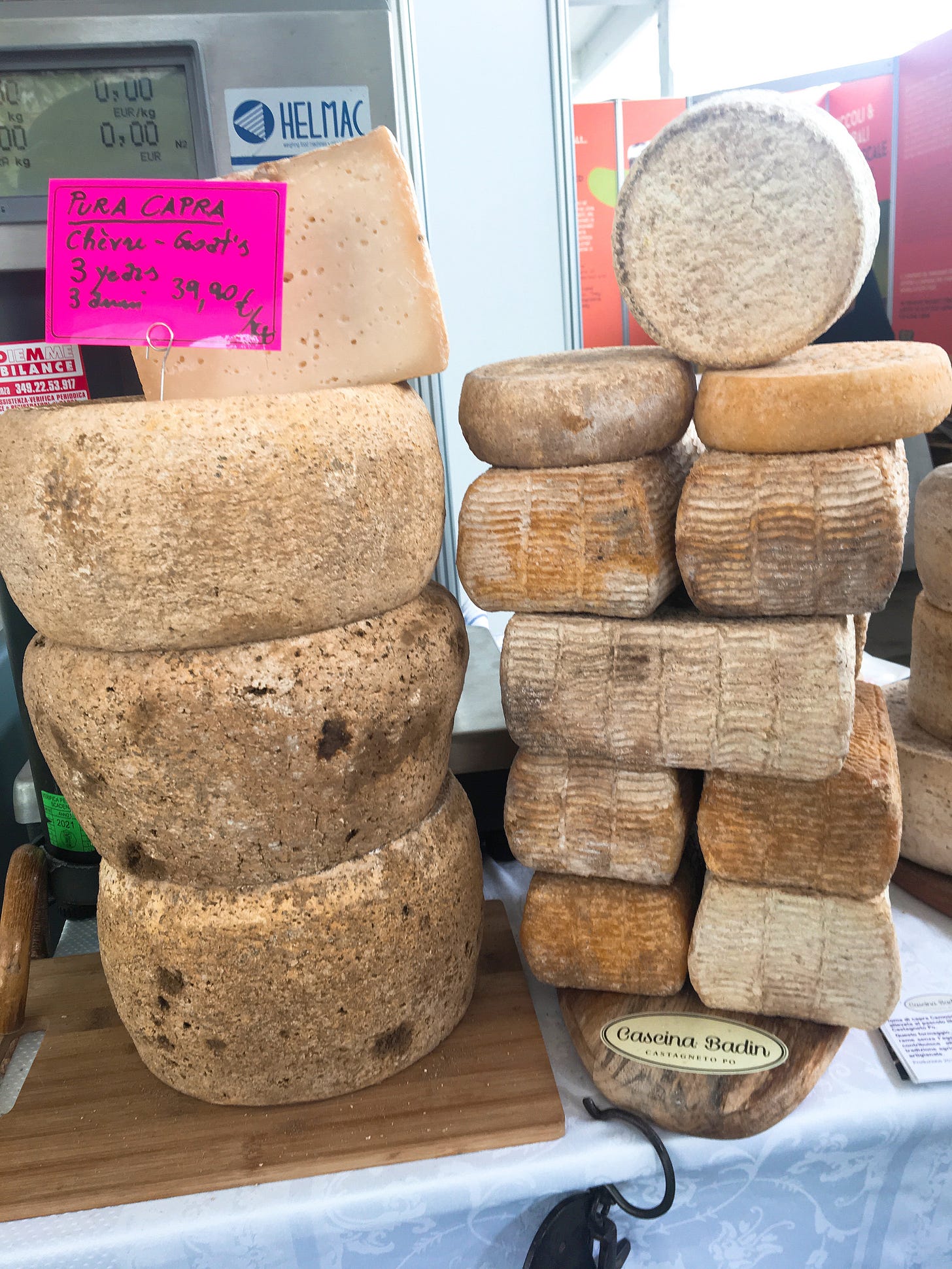
Mimolette - the mitey orange cannonball.
Studies involving two cheeses defined by the action of mites show that distinct species are grown on French Mimolette, and German Milbenkase. One paper claims that Mimolette utilizes Acarus siro, known as the flour mite. Mites are intentionally applied and allowed to do their work, but brushed off at an interval that prevents them from destroying the cheese. They do pit the rind, but not to the point of tunneling horizontally and setting up camp inside. The flattened cannonball Edam shape must play a role; it would seem to impede mites, which do better on broad, flat surfaces. The affineurs appear to have become precise in their partnership with the mites, which tracks with the French approach to aging cheese.
Milbenkase - teaming with mites
German Milbenkase (mite cheese) has been made since the Middle Ages, and was nearly extinct before a revival in the town of Würchwitz. This small town features a giant cheese mite statue with a little hole in its rear end where a cheese can be stashed so visitors can smell it. Of course, I must go someday, to sniff the spider cheese butthole. It’s what I do. The cheese starts as quark which is seasoned with caraway and moulded into a range of shapes. After a drying period, the cheeses are buried in boxes full of mite dust. The mites are fed with rye flour, so they don’t simply destroy the cheese. It sounds like the cheese is being ripened through immersion in the earthy, ammoniated mite milieu, absorbing its aroma and being bathed in mite digestive enzymes. That is quite different from the ripening of mimolette, or simply allowing mites to run wild in an aging space. From watching this video, it appears the mites worked with here are fairly large, and can be seen with a sharp naked eye. It is thought that the species Tyrophagus casei is the sole player.
What flavors do mites impart? It can range, depending on how they are managed. I’ve inhaled a good amount of mite dust while brushing cheese, and always thought it tasted like a fuck-up curry with lime juice and lots of stale turmeric: spicy, sour, and earthy. You can get a hint of those flavors on rinds with significant mite impact. They work well alongside the sweet, cloying caramel character found in mimolette, which some claim is mite-induced. Mite-ridden cheeses which have been bored through look like brown bread and have a strong dose of mite curry, plus pronounced cheese cellar flavor (musty moldy), ammonia, a nasal burn, and oxidized milk weirdness (think butter left exposed in the fridge too long). I have not had Milbenkase, but it is said to have a sour, lemony citrus flavor, which likely results from ingesting living mites, the customary approach to consumption. This paper found that the mites secrete various aromatic oils, and it is these that lead to the citrus flavor.
The more I learn, the more time I spend with them, the more I respect the little cheese fans, and in a strange way, identify with, perhaps even envy them. Living inside a cheese tunnel with their friends, which rests in the cool darkness of a cave in the earth. It sounds like a chill life compared to the hustle and bright noise of life on the surface.
If you need me, I’ll be doing my best cheese mite impersonation, in a damp hole in the side of a forgotten mountain, waiting for the fresh cheese to grow enough mold to be deemed edible.
If you have information about mimolette affinage or other mite-aged cheeses, please drop it as a comment. Have you seen mites on washed rind, or soft, white mold cheeses? I have not, unless these are aged long term, becoming dry. Do mites prefer certain cheeses, or region of a space, do they have seasonal fluccuations, what are their flavor impacts, role in cheese ripening? How do they get into aging spaces, are they inevitable?

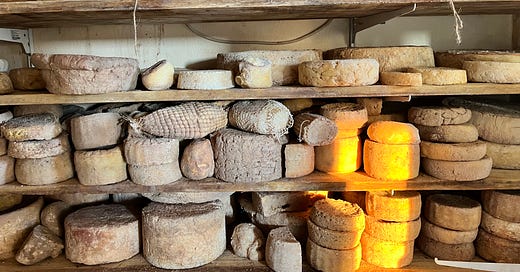




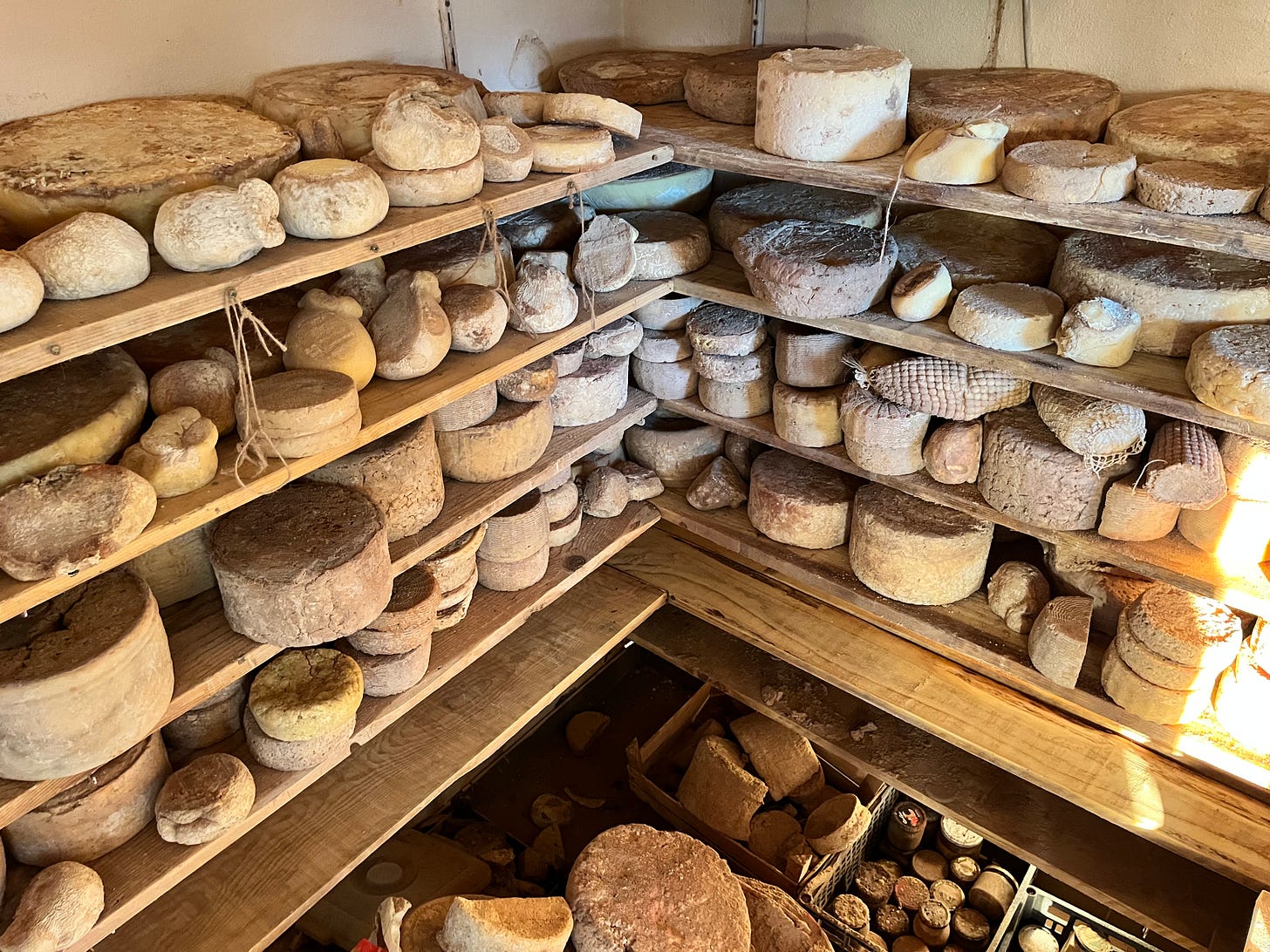
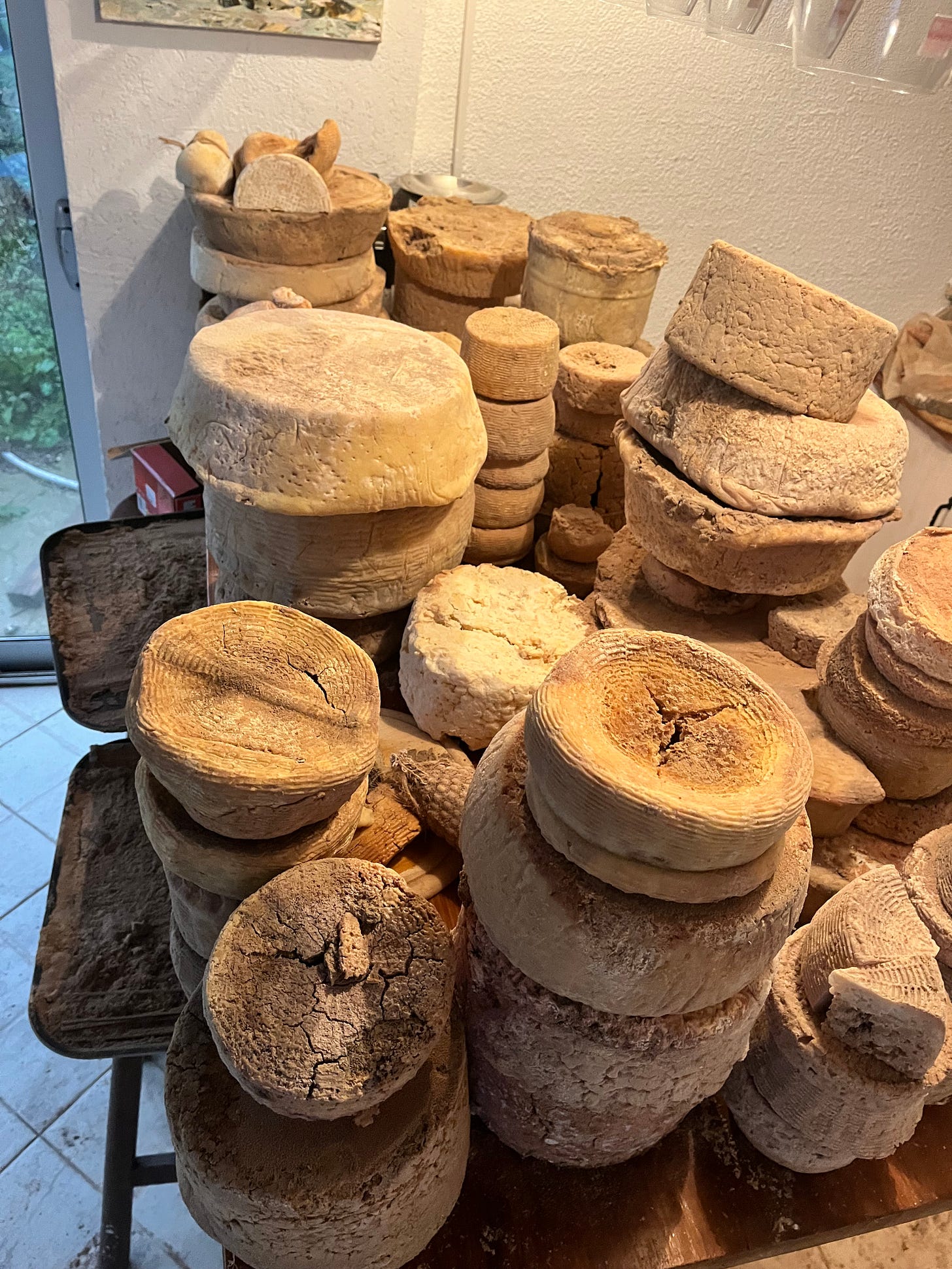
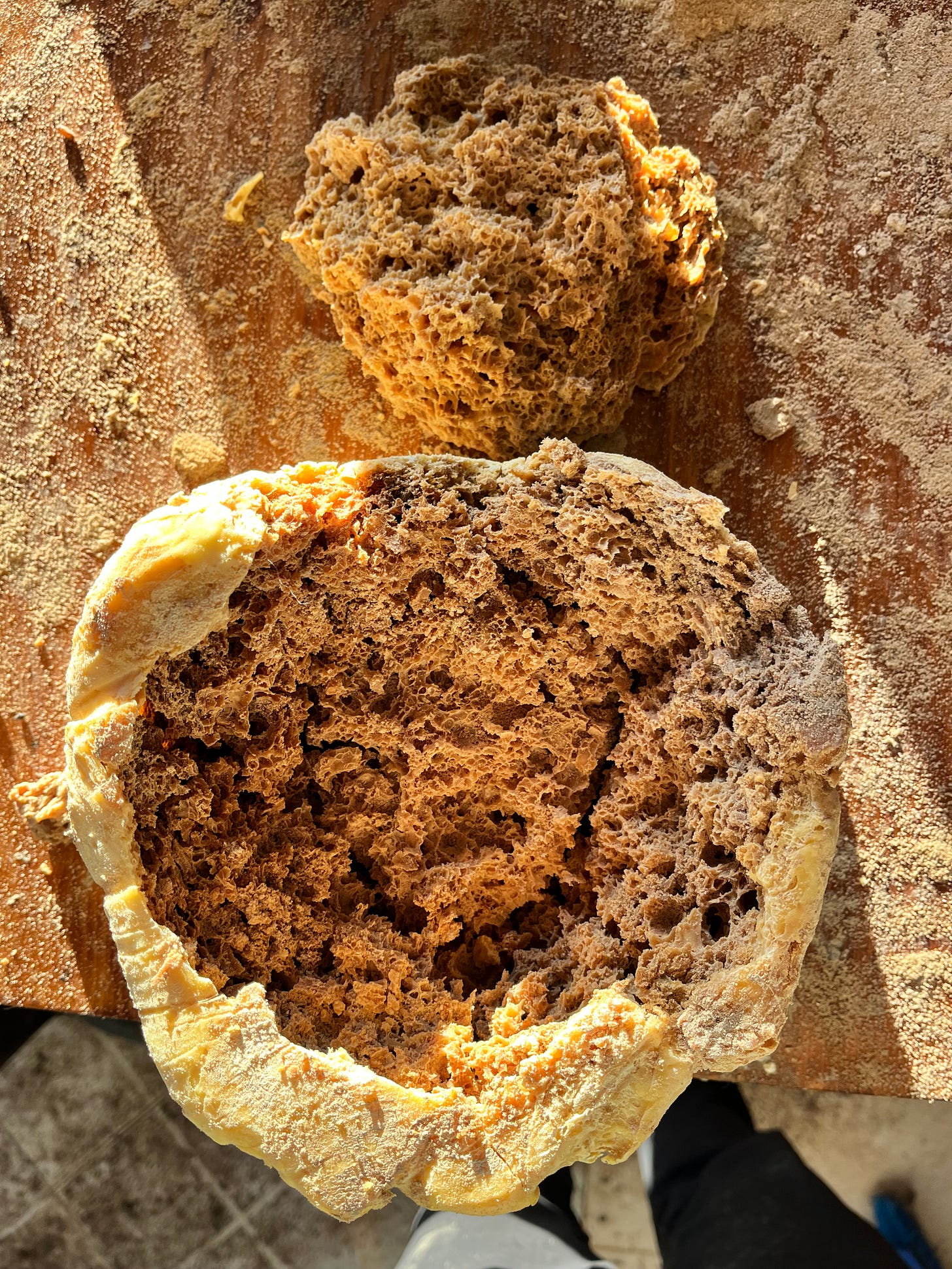

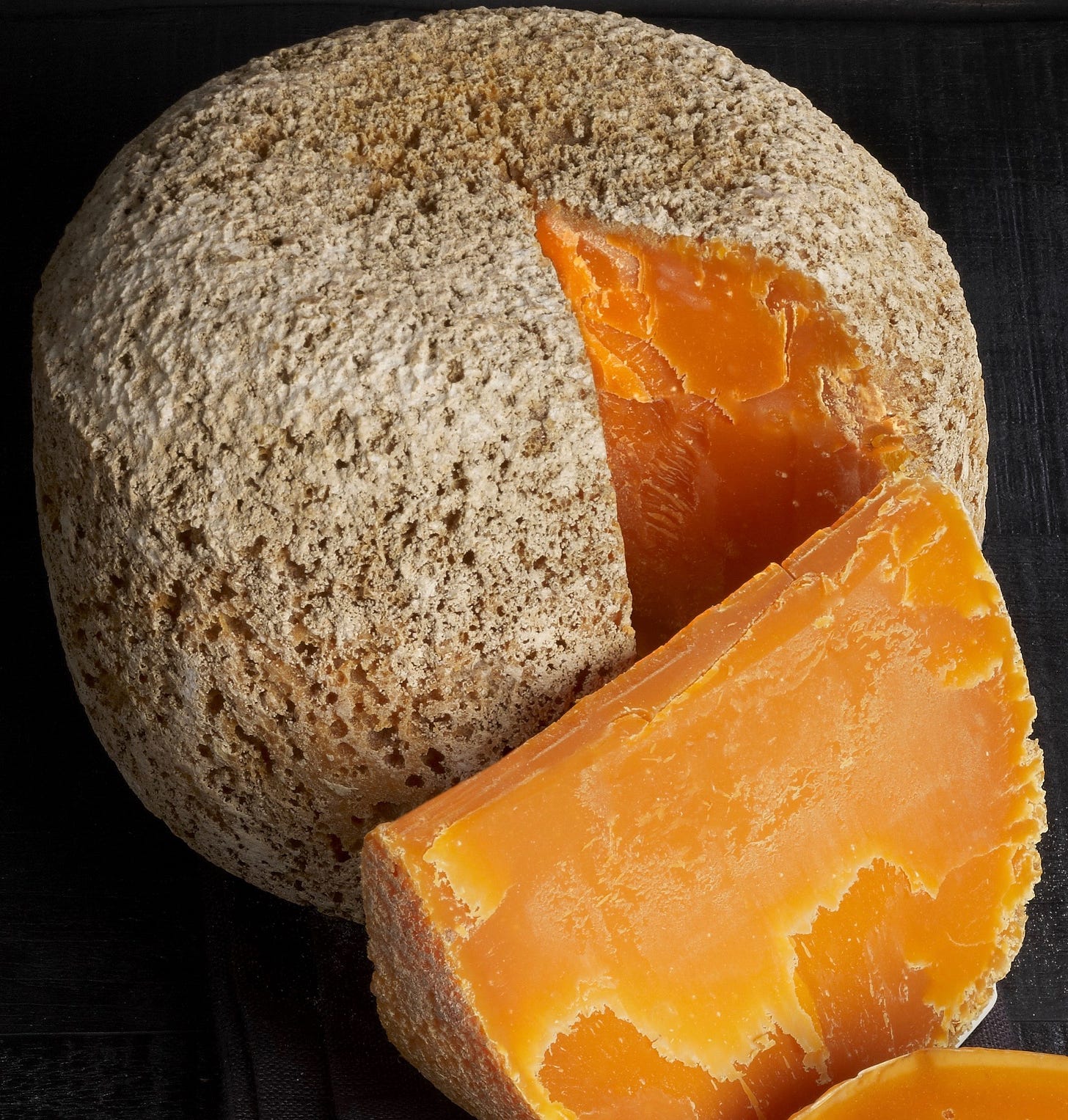
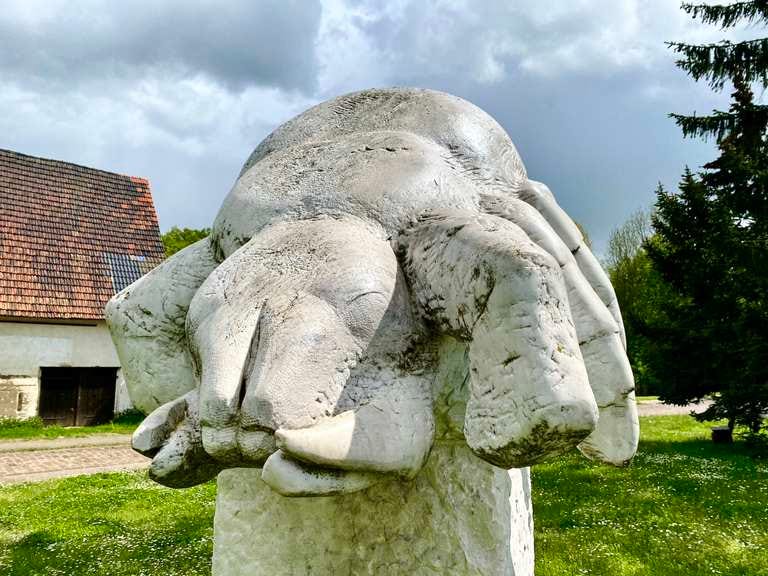
I have seen mites on both washed-rind cheeses and bloomy-rind cheeses, but only when they’ve been wrapped for an extended period. These cheeses were not dried out. It was a sight to behold.
The cheese-mites asked how the cheese got there,
And warmly debated the matter;
The Orthodox said that it came from the air,
And the Heretics said from the platter.
They argued it long and they argued it strong,
And I hear they are arguing now;
But of all the choice spirits who lived in the cheese,
Not one of them thought of a cow.
A Parable
By Sir Arthur Conan Doyle